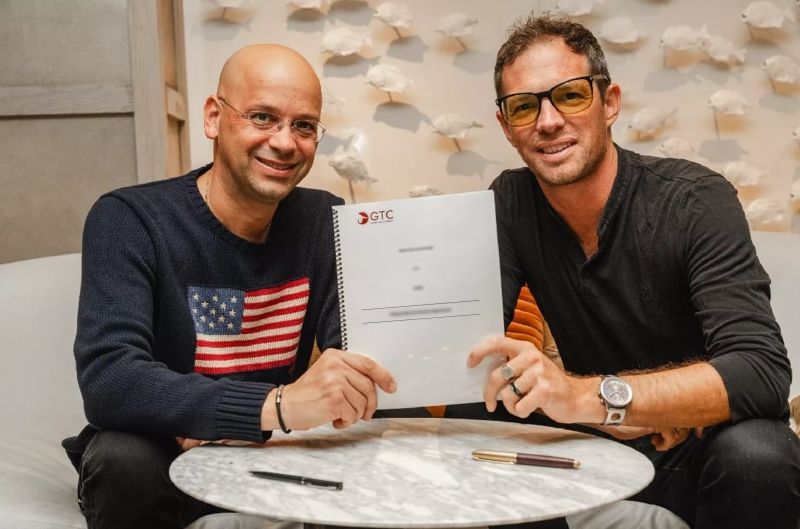Have you ever watched a launch of Elon Musk’s SpaceX Falcon rockets? If not, I’d recommend joining a YouTube live stream of the nowadays quite frequent lift-offs. However, I personally am even more fascinated by the countdown. During that phase there are endless checks and tests on all the subsystems of a rocket as fuel and liquid gas is loaded onto the rocket tanks, the reassuring call out of “All Systems are Go for Launch” and finally the computer takes over control of the rocket with even more automated checks – a rigorous set of procedures that have resulted in successfully launching 33 rockets consecutively in the last 2 years.
In the messaging space, we are also currently watching a launch.
Rich Communication Services (RCS) is the next generation SMS. RCS has been put onto the launch pad a few times in the past 10 years without taking off for various reasons. But now things have evolved with the Unified Profile 2.x that added exciting Application to Person (A2P) capabilities and Google’s backing of RCS by supporting it by default in all Android devices.
With that the momentum is building, the fuel is being loaded: MWC 2018 in Barcelona showcased wide interest from well-known enterprises and brands that want to use RCS to communicate with their customers. Many mobile carriers and messaging aggregators have implemented RCS and are Go for Launch with their platforms.
So, what are the last checks that RCS needs to pass before igniting the engines on full throttle for a successful (commercial) launch?

Clarity on pricing
Ever wanted to buy something without knowing the price? Or even without knowing how it is priced – either by weight like bananas or time of usage like a rental car? Makes it challenging to go ahead…
Well, that is a bit the situation with Rich Communication Services (RCS). Mobile Operators have not yet announced a commercial pricing model, let alone pricing point. The likely candidates are a price per message (as it is with SMS today) or/and per session (given that RCS is geared towards a ping pong style of back and forth communication between the enterprise bot and the user).
There is agreement to not repeat the MMS mistake, where the pricing was too complex (depending on the sent image size) and too expensive (killing the user adoption after the first bill shock). On the other hand, nobody wants to go too low initially – given that Mobile Operators hope that RCS becomes a well needed revenue source.
The situation reminds me a bit of parties at some tech conferences, where nobody wants to be the first to enter the dance floor (and make a fool of itself with all others watching). However, once someone was brave to start dancing the floor fills in no time. So, we need a first mover on RCS pricing.
Getting the timing right
The bottom line for RCS: the clock is ticking and the mobile operators should introduce and offer it before the time window closes on RCS – ideally, all operators in a country to make it a nation-wide offer.”
RCS capabilities are great – however, RCS is not the only “rocket” available. Apple has started in March to offer iMessage for A2P as a beta program under the term Apple Business Chat. Likewise, in August this year, Whatsapp launched an Early Access Program for enterprises. The feature set and look & feel is quite comparable to RCS.
These two competing technologies are proprietary to Apple and Facebook, while RCS is an open standard backed by the GSMA and implemented by your trusted mobile operator and all operators worldwide.
The key aspect here is in my view not open versus proprietary, but time to market. Whoever establishes itself as the first working, next-generation A2P channel, will reap a majority of the market.
What it boils down to is coverage in the territory the enterprise looking for A2P has customers in. Apple is worldwide but limited to iPhone users. Whatsapp is supported by all smartphones with varying penetration depending on geography (with some countries coming close to 100% penetration).
The bottom line for RCS: the clock is ticking and the mobile operators should introduce and offer it before the time window closes on RCS – ideally, all operators in a country to make it a nationwide offer.
Standardising security to make RCS wholesale ready
Rich Communication Services (RCS) solves a big issue for SMS: SMiShing.
RCS comes with the concept of a serviceID that is verified. What I have yet to see are globally established procedures to assure that the technical capabilities are not surmounted by sloppy procedures.
This would have two major benefits: one is that RCS would be really a channel that can be trusted by the consumer. Additionally, having procedures in place would also allow for wholesaling RCS. Wholesale is one of the key success criteria for any telecom service (Voice, SMS, etc.): Since nobody can be connected to everybody, wholesale solves that issue giving global coverage to everybody, a key success factor for voice and SMS.
Starting the countdown
Gosh – reading all this, it may sound like RCS might never launch!
Well, the solution is not to boil the ocean but to start in a certain country with e.g. just one vertical. Create a successful reference. Then it will expand from there quickly. And as soon as there is a critical mass of RCS traffic, it will have a tipping effect: Missing operators will add RCS to their portfolio, Apple will support RCS natively on their devices, enterprises will replace their custom apps with RCS and we will be watching in awe how the RCS rocket will lift to space.
Global Telco Consult (GTC) is a trusted independent business messaging consultancy with deep domain knowledge in application-to-person (A2P) services. GTC provides tailor-made messaging strategies to enterprises, messaging service providers, operators and voice carriers. We have expertise in multiple messaging channels such as RCS, Viber, WhatsApp, Telegram and SMS for the wholesale and retail industry.
GTC supports its customers from market strategy through service launch, running the operations and supporting sales and procurement. The company started in 2016 with a mission to guide operators and telcos to embrace new and exciting opportunities and make the most out of business messaging. For more information or industry insights, browse through our blog page or follow us on LinkedIn.



